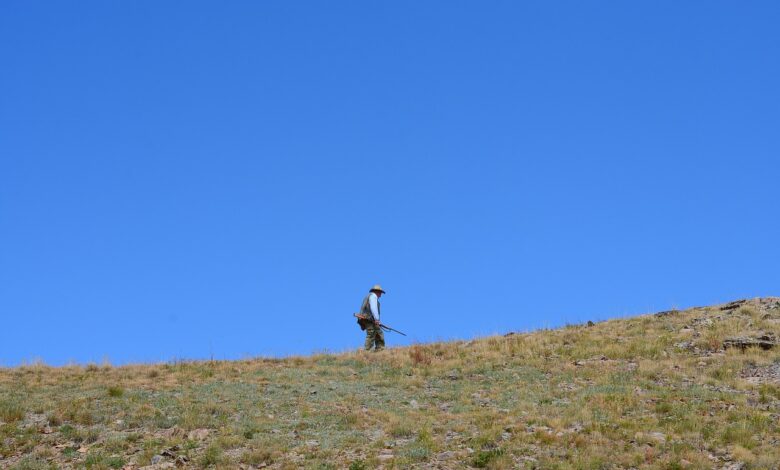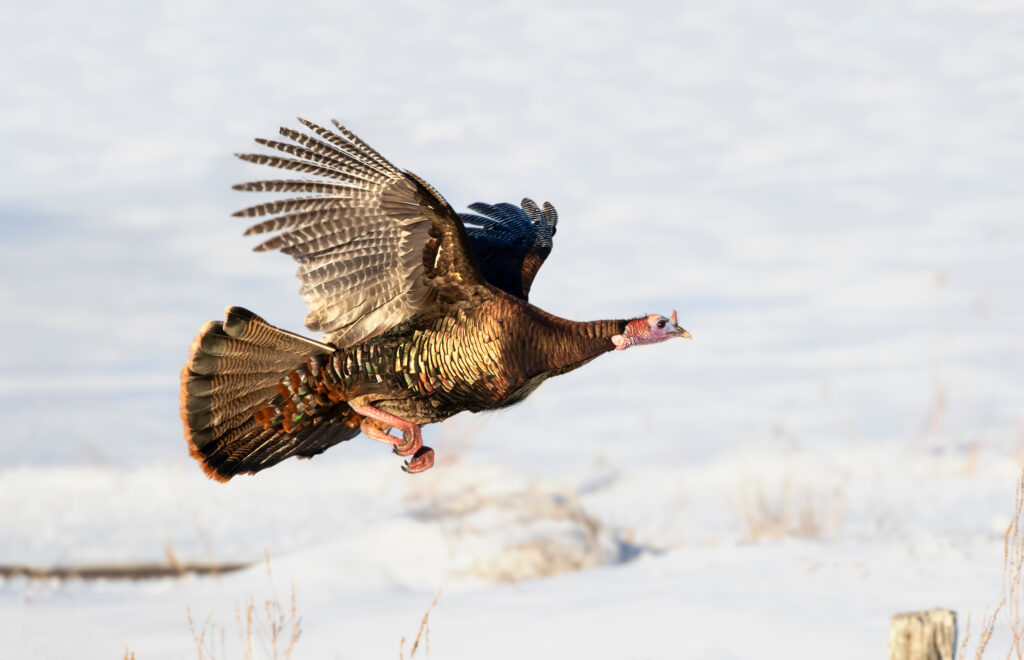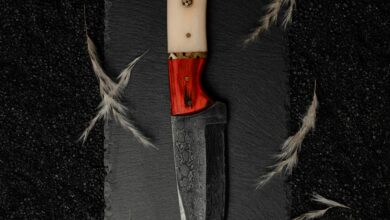Where to Shoot a Turkey So You Never Miss Again

As turkey hunters, we prefer a clean and ethical kill with every shot at the bird. And that brings up the question of where to shoot a turkey to ensure that we drop him in his tracks.
Since turkey vitals are small in size, knowing where to aim at a turkey is crucial. I remember learning some tough lessons from losing a couple of birds in my first season. But I was willing to learn from my mistakes and that made a big difference to my shot placements.
So, if you are not sure about where to shoot a turkey with a shotgun, keep reading.
Where to Shoot a Turkey with a Shotgun
The vital organs of a turkey are protected by their wing bones and thick feathers. That makes the head and neck area the best target when hunting with a shotgun. While this is a small target area, a hit will shatter the central nervous system, leading to instant death.
With a body shot, it is hard for the pellets to penetrate the dense feather cover and hit the vital organs. Even if they do, hitting the body will most likely riddle the breasted meat with tooth-cracking shots.
Aiming for the upper part of the head is a gamble as turkey heads are in constant motion. Most turkey target images mark the fourth cervical vertebrae from the top of the head as the ideal target. This is the area where the neck connects with the black feathers of the body.
When it comes to killing a turkey with a shotgun, pattern density is a vital aspect. Now, opinions vary on the number of pellets that you need for a clean kill. The minimum pattern count average that I look for is between 100 pellets in a 10″ circle.
The range will affect pattern density, but with TSS turkey loads, you can get more than 200 pellets within the circle at 40 yards. This ensures that a sufficient number of pellets will strike the vital areas. Some of these loads deliver excellent density even at 50 yards, and I don’t see myself shooting beyond that range.
The other aspect is shot penetration. You need the right pellet size depending on the range and the common options are the No. 4, No. 5, or No. 6. Within 35 yards the No. 6s are most reliable, and for longer distances, you can depend on the no. 4s. It is critical to pattern your shotgun before the turkey mating season and find out the load that delivers consistent patterns at a given range.

Where to Shoot a Turkey with a Rifle
Shooting a turkey with a rifle is more complicated. When you are aiming at a turkey with your deer rifle, the head and neck region is too small a target to ensure a clean kill. Plus, the turkey head is almost always in motion. So, when using a rifle, a heart/lung shot is the best option.
Do not assume that shot to be easy though. A closer look at turkey anatomy will tell you that these organs are the size of a softball. I have seen breast-shot gobblers fly away, and never to be found again. Next, consider the bullet construction. For example, a hollow point .223 round significantly damages the flesh, and salvaging the meat can be difficult.
While shooting with a rifle at a bird facing you, aim at a point on the center line, just an inch above the beard. This works even if the bird is strutting.
To make a broadside shot of a strutting bird, look for a point where the base of the neck meets the dark feathers on the chest and neck. From this point go back horizontally on the body by an inch and place your cross hairs on that point.
For a quartering-to or slightly angled tom, I stick to the suggestion that a veteran hunter offered me years ago. Draw an imaginary line from the offside leg to the base of the beard. This is the ideal point for a heart/lung shot. If it is a strutter, aim for the same point as mentioned for a broadside shot.
When it comes to shooting a turkey in the backside, aim right at the center of the base of the fan. This will make the bullet travel along the spine and shatter the heart to drop the gobbler instantly.
Lastly, make sure to check if your state allows turkey hunting with a rifle and the regulations on minimum calibers.
Where to Shoot a Turkey with a Bow
For turkey shot placement with a bow, consider the same aiming points as those while using a rifle. I have attempted a few head/neck shots with a bow when the distances were around 15 yards. This is a hit-or-miss shot that works best when the bird is facing you and strutting. In that case, you have a black background of feathers to help you aim.
A broadside shot into the heart or lung that pins the wing to the body works great as it prevents the bird from flying away. That said, I avoid taking side shots at strutting birds. More on that later.
Tips for Turkey Shot Placement
Many hunters try to make the shot quickly, especially if the bird is walking away. Slowing down, reading the bird’s body language, and aiming carefully is super important. If the gobbler is sold on to your turkey hunting decoy spread, chances are, you will get more than one shot opportunity.
Here are a few other points to take note of.
1. Don’t Shoot a Turkey in Full Strut
In full strut, a gobbler looks much bigger than he is. That can make the hunter misjudge the body position of the tom and blast the fan instead of making a killing hit. Besides, the neck of the bird is tucked which makes it difficult to aim at that area. Even so, aiming at the general head and neck area is the best option for a strutting turkey.
2. Identify Your Target
The most important rule of turkey hunting is identifying your target before squeezing the trigger. Remember, there are other hunters out there, partially hidden or camouflaged and making turkey calls. So, never shoot at sound or movements, and make sure that you are aiming at a legal turkey. This is necessary to minimize the chances of accidental shootings during spring turkey hunts. For this reason, using binoculars for hunting is a good idea.
3. Learn to Shoot Off Hand
For right-handed shooters, it gets extremely difficult to cover a gobbler who has snuck in from the right side. Or you may have hurt your shooting arm or shoulder in some way while scouting for turkeys. Things get much easier if you can shoot with your off-hand. Simply shift the rifle to the other shoulder and aim for the bird.
And no, you do not need to be ambidextrous for shooting off-hand. It does feel super weird in the beginning, but developing muscle memory takes time. The only thing you need is a lot of practice and enough patience to get it right. Note that the point of impact of the arrow or a bullet can change when you change hands. You need to compensate for that while aiming at the bird.
Final Thoughts
While shooting a turkey with a shotgun is a straightforward approach, using a bow or a rifle makes it more challenging. Hunting in different conditions needs different tactics and making the perfect spine-severing shot every time is not easy. But once you have the basic considerations figured out, it gets easier.
Now that you know where to shoot a turkey, it is time to make each shot count.



One Comment